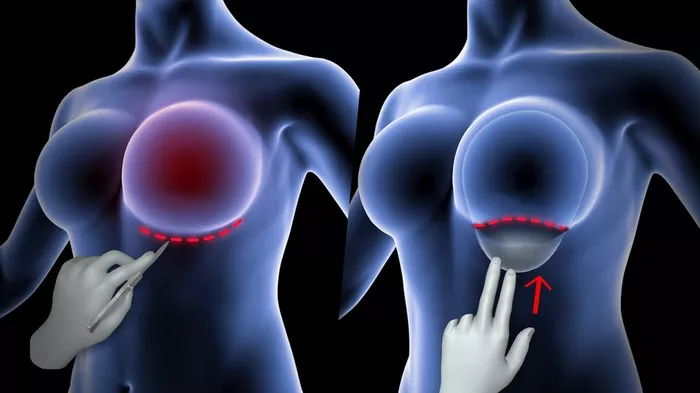Breast augmentation has become a widely sought-after cosmetic procedure, offering individuals the opportunity to enhance their breast size and shape. Central to this decision-making process is the selection of breast implants, a choice that involves considerations of material, shape, and texture. This comprehensive exploration delves into the 4 types of breast implants, providing insights into the characteristics, advantages, and considerations associated with each option. Understanding the nuances of these implants is crucial for individuals embarking on the journey of breast augmentation.
1. Saline Breast Implants
Saline breast implants are one of the 4 types of breast implants characterized by their fluid-filled design. These implants consist of a silicone shell filled with sterile saline solution. One of the notable advantages of saline implants is their adjustability during surgery. Surgeons can fine-tune the volume of saline to achieve the desired breast size. In the event of a rupture, saline is harmlessly absorbed by the body. However, some individuals may find that saline implants feel less natural than their silicone counterparts. This section explores the characteristics and considerations associated with saline breast implants, providing individuals with valuable insights for informed decision-making.
2. Silicone Gel Breast Implants
Silicone gel breast implants represent another option among the 4 types of breast implants. These implants are filled with a cohesive silicone gel that closely mimics the feel of natural breast tissue. The gel’s viscosity contributes to a more natural appearance and texture. Silicone implants are popular for their ability to provide a soft and realistic feel, making them an appealing choice for individuals seeking a more natural outcome. Regular monitoring through imaging is recommended to detect any potential ruptures, as silicone leaks may be silent. This section explores the characteristics, advantages, and considerations associated with silicone gel breast implants.
3. Structured Breast Implants
Structured breast implants, often referred to as “gummy bear” implants, represent a notable advancement among the 4 types of breast implants. These implants feature a highly cohesive silicone gel with a structured inner shell. This design aims to provide enhanced shape retention and reduce the risk of rippling. Structured implants are known for their form-stable nature, maintaining their shape even if the outer shell is compromised. The teardrop shape contributes to a natural-looking outcome, making them a popular choice for individuals prioritizing both shape and longevity. This section delves into the unique characteristics and considerations associated with structured breast implants.
4. Fat Transfer Breast Augmentation
Fat transfer breast augmentation, also known as autologous fat grafting, represents a distinctive option among the 4 types of breast implants. Unlike traditional implants, this approach involves using the individual’s own fat to enhance breast volume. The procedure begins with liposuction to harvest fat from areas such as the abdomen or thighs. The harvested fat is then processed and injected into the breasts. Fat transfer offers a natural-looking and feeling result while simultaneously contouring other areas of the body. While it provides a dual benefit of body sculpting and breast enhancement, not everyone is a candidate for this procedure. This section explores the characteristics, advantages, and considerations associated with fat transfer breast augmentation.
Considerations in Choosing Breast Implants
The decision to undergo breast augmentation involves a careful consideration of individual goals, preferences, and anatomical factors. Each of the 4 types of breast implants offers distinct advantages, and the choice depends on factors such as desired aesthetics, personal comfort, and the surgeon’s recommendation. Surgeons play a crucial role in guiding individuals through the decision-making process, providing comprehensive information about each implant type, and tailoring recommendations to align with individual goals. This section emphasizes the importance of open communication and collaboration between individuals and their surgeons to achieve the desired outcomes in breast augmentation.
Surgical Considerations
The choice of breast implants is intricately linked with surgical considerations, including incision choices and implant placement. The incision for implant placement can be made in various locations, each with its own set of advantages. Common incision sites include inframammary (under the breast fold), periareolar (around the nipple), and transaxillary (in the armpit). Additionally, the implants can be placed either above or below the chest muscle, each option influencing the final result. Understanding the relationship between implant type, incision choice, and placement is essential for achieving optimal outcomes in breast augmentation surgery.
Recovery and Follow-Up
The postoperative phase of breast augmentation is a critical period in nurturing the surgical outcome and ensuring a smooth recovery. Individuals should follow postoperative care instructions provided by their surgeons, including restrictions on physical activity, medication regimens, and scheduled follow-up appointments. Surgeons, in turn, play a vital role in monitoring the healing process, addressing any concerns, and guiding individuals through the stages of recovery. This collaborative effort between individuals and surgeons contributes to optimal outcomes and long-term satisfaction with the chosen breast implants.
Conclusion
In conclusion, the world of breast augmentation offers individuals a spectrum of choices, with the 4 types of breast implants providing unique options to achieve desired outcomes. Understanding the characteristics, advantages, and considerations associated with saline, silicone gel, structured, and fat transfer implants empowers individuals to make informed decisions aligned with their goals. Surgeons, as trusted guides in the journey of breast augmentation, play a pivotal role in educating individuals, tailoring recommendations, and ensuring a collaborative decision-making process. The intersection of individual preferences, surgical expertise, and cultural influences creates a dynamic landscape in which individuals can confidently navigate their choices and embark on a transformative journey in breast augmentation.


